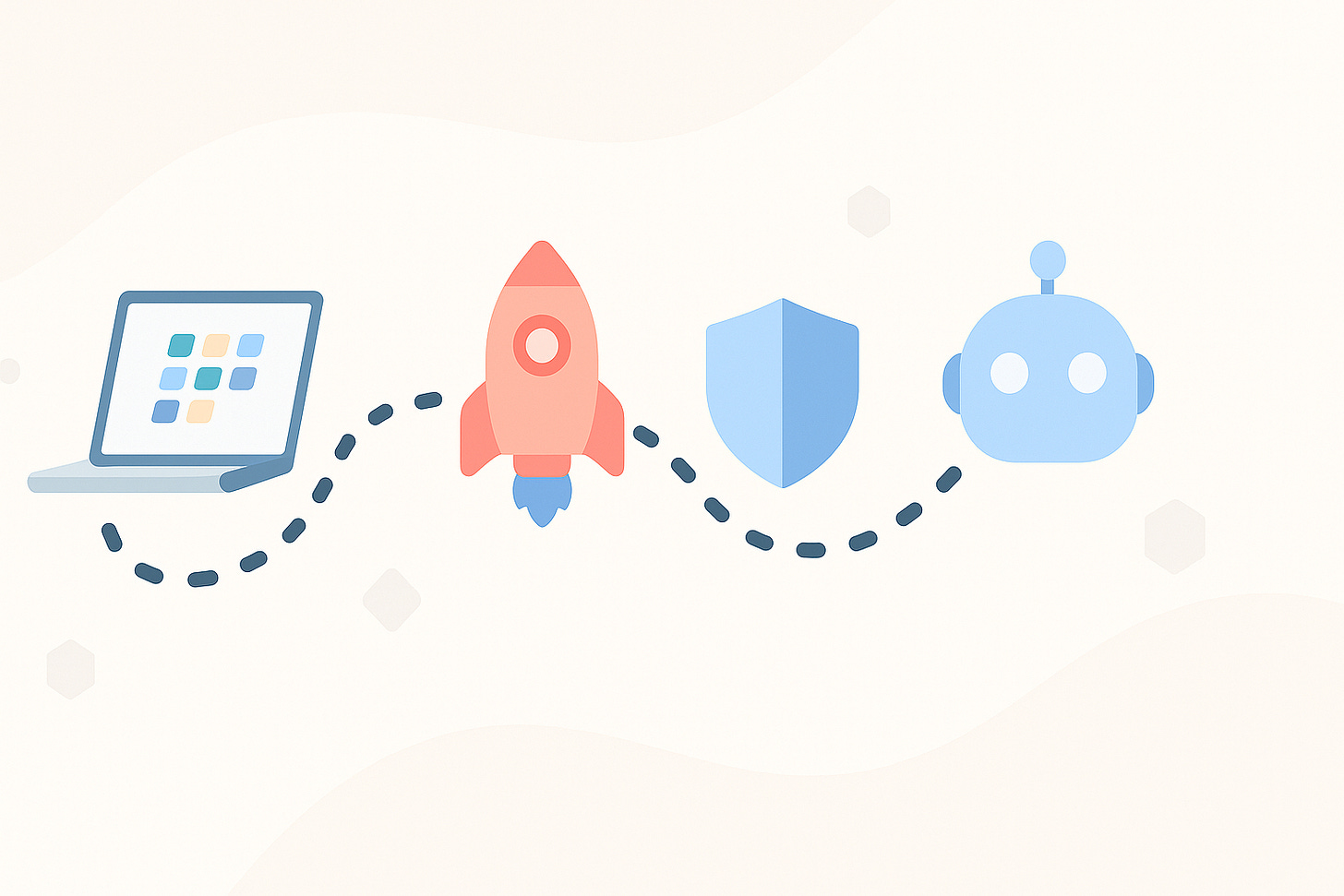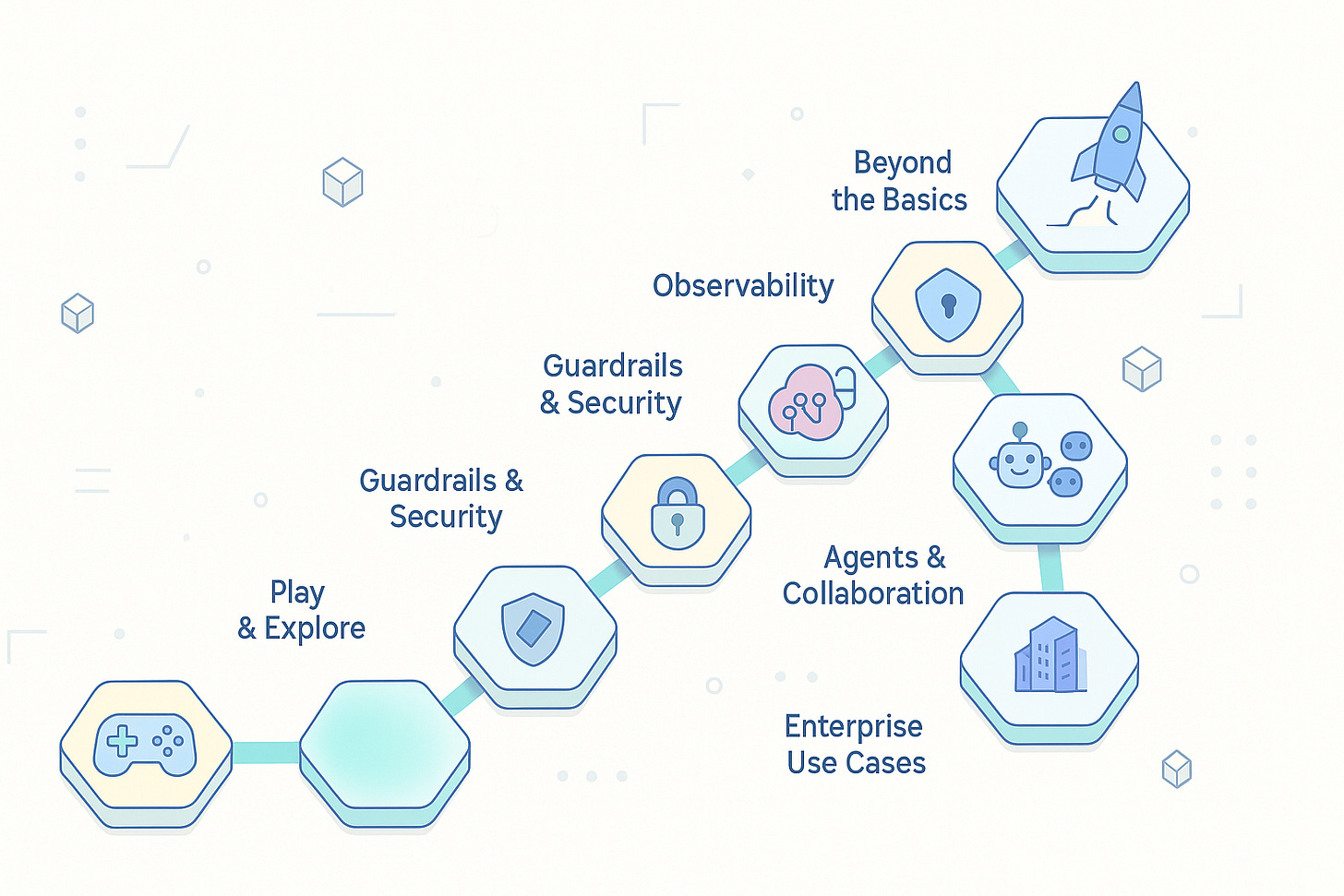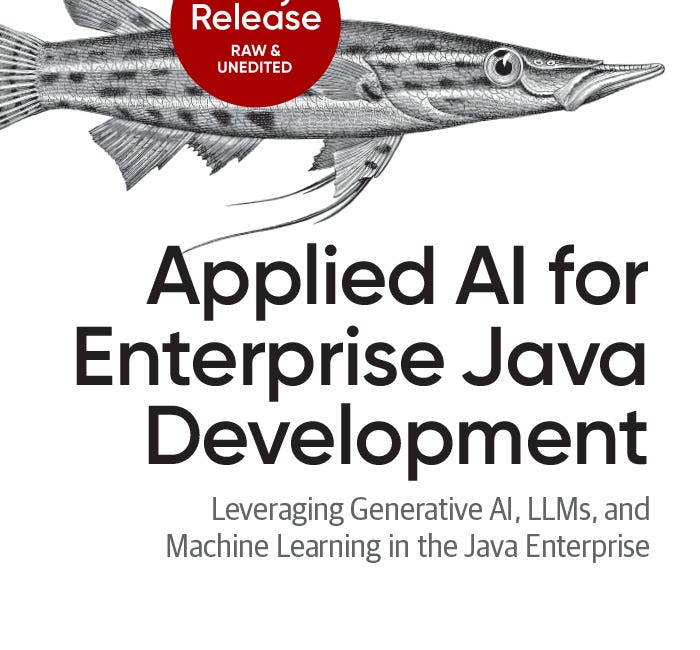Your Path to LangChain4j Mastery: A Beginner’s Journey for Java Developers
Step-by-step learning map to build AI-powered applications with Quarkus and LangChain4j. Go from first prompts to enterprise use cases.
AI feels like a new frontier for Java developers. Python gets most of the hype, but our ecosystem has mature tools, deep enterprise roots, and a hunger to integrate new capabilities without leaving those foundations behind.
That’s why LangChain4j matters. It brings the ideas of LangChain, prompt management, memory, agents, evaluation, into the Java world. Combined with Quarkus, it becomes fast, lean, and enterprise-ready.
Over the last months on The Main Thread, I’ve explored LangChain4j from many angles: playful hacks, architectural deep dives, and enterprise-grade integrations. Looking back, these posts form a clear pattern: a learning path.
So instead of handing you a list of links, I’ve stitched them into a structured map to becoming a LangChain4j expert. Follow it stage by stage, and you’ll move from your first AI call in Java to designing secure, observable, multi-agent systems that can run in production.
Stage 1: Foundations
Every journey starts with a first run. For LangChain4j, that means breaking the ice: making your first call to an LLM in a way that feels natural to a Java developer.
Getting Started with Java AI Integration in Quarkus
Your very first app. It shows that AI calls in Quarkus are no scarier than REST endpoints or CDI beans.AI Document Assistant
This article introduces the AI Service interface pattern — define a Java interface, annotate it, and Quarkus + LangChain4j handle the model integration. It feels like writing a JAX-RS client, but for AI.
Goal of Stage 1: prove to yourself that LangChain4j is approachable, and Quarkus makes it painless.
Stage 2: Play and Explore
Play builds confidence. It’s not about deploying to production; it’s about experimenting without fear.
These whimsical projects may look silly, but they teach important basics: prompting, structuring output as JSON, and even maintaining conversational state.
Goal of Stage 2: get comfortable. If you can generate jokes and starship logs, you’re ready to tackle real-world use cases.
Stage 3: Data Handling
After the fun comes the serious part: data. Enterprise AI is mostly about your data, not just generic chat.
Text Embeddings & Similarity Search
Learn how to embed text into vectors and perform semantic similarity checks.Structured Data Extraction
Force the LLM to output structured JSON instead of free-form text. Perfect for invoices, forms, and regulated workflows.Docling Data Preparation
Parse PDFs and DOCX documents before embedding them. Shows why preprocessing pipelines are critical.
Goal of Stage 3: understand that enterprise AI lives and dies on data preparation. Models are the same for everyone; the value lies in how you process your inputs.
Stage 4: Guardrails and Security
AI without guardrails is a liability. Java developers are already trained to think in terms of validation, error handling, and compliance. LangChain4j extends that mindset.
Exception Handling & PII Redaction
Ensure sensitive information never leaks.Content Moderation with Bloom Filters
Use probabilistic data structures plus AI moderation to scale safety checks.
Goal of Stage 4: treat safety as a design feature, not an afterthought.
Stage 5: Memory and Chaining
Single prompts are useful. Real applications need memory and workflows that span multiple steps.
Semantic Memory with pgvector
Store and retrieve conversation history with vector search.Self-Organizing AI Memory
Consolidate and restructure memory over time, just like a human brain.Two-Step AI Pipelines
Break complex tasks into multiple model calls.
Goal of Stage 5: move from toy demos to workflows that behave like real-world systems.
Stage 6: Agents and Collaboration
Agents take AI from helper to teammate. They plan, call tools, and collaborate.
Multi-Agent AI
Showcases coordination between multiple AI roles.Agentic Java APIs
Demonstrates how to orchestrate multiple models for better results.Real-Time Collaborative AI Editor
Merges AI with CRDTs to allow multiple users — and AI — to collaborate in real time.
Goal of Stage 6: see AI not just as a stateless service, but as a team member in your architecture.
Stage 7: Observability and Debugging
Flying blind with AI is dangerous. Observability is how we earn trust.
Java AI Observability
Trace prompts and responses with standard telemetry.LLM Observability
Add metrics, logs, and dashboards for your AI layer.AI Debugging Assistant
Build meta-tools where AI helps you debug AI itself.
Goal of Stage 7: make AI transparent, measurable, and debuggable.
Stage 8: Enterprise Use Cases
All previous stages build toward this. This is where LangChain4j proves itself in business contexts.
Customer Support Automation
Ticket classification and routing with AI assistance.AI White Paper Generator
Automates polished document creation with Quarkus, LangChain4j, and iText.
Goal of Stage 8: move from experiments to applications that deliver business value.
Stage 9: Beyond the Basics
LangChain4j keeps evolving. If you’ve mastered the earlier stages, here’s the frontier:
LangGraph4j for structured agent flows.
Hybrid retrieval that combines vector and keyword search.
Edge deployments with Quarkus MicroShift + Ollama for local-first AI.
Secure AI gateways that enforce compliance in real time.
Goal of Stage 9: push boundaries. Don’t just consume LangChain4j, help extend it. Contribute with your own tutorials or help with LangChain4j documentation. Check out the LangChain4j project on Github!
How to Travel This Map
Don’t binge all stages at once. Pick one project per stage, run it end-to-end.
Stay playful even as you tackle serious projects. Joy helps learning stick.
Keep old code around. Your mistakes are your best teachers. You can find more of mine in the companion Github repository!
Share what you build. The ecosystem grows stronger when experiments are visible.
The Thread Is Still Unspooling
Becoming a LangChain4j expert isn’t about memorizing APIs. It’s about building confidence through projects. Each stage teaches you a new skill, and together they form a practice that can scale from experiments to production.
This map is one way to structure the journey. You may jump stages, revisit old ones, or invent your own. That’s fine. The important part is that you keep pulling on the thread.
If you want to learn even more about how to infuse AI into your applications, make sure to check out my upcoming book:
Integrating AI into Enterprise Java: Download the Early Edition of My New Book
As the author of Applied AI for Enterprise Java Development, I'm excited to share an early, raw version of this practical guide tailored specifically for Java developers. This book demonstrates how to seamlessly integrate generative AI, large language models, and machine learning into your existing Java enterprise ecosystem using familiar tools and fram…
Now it’s your turn. Where are you on this path? Just starting out? Deep into agents? Wrestling with observability? Comment below or reply by email. The future of The Main Thread will be shaped by your questions and challenges.
Because the strongest threads are the ones we weave together.
— Markus





